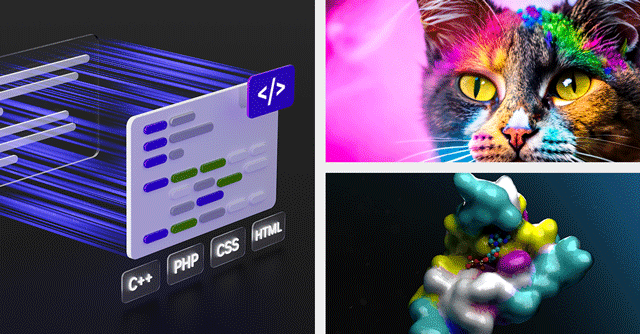
Nvidia launches generative AI platforms for enterprises


Taiwanese chipmaker Nvidia has topped up its foray into artificial intelligence (AI) with a series of new generative AI platforms that will “accelerate” its adoption and enable organisations to build applications around it.
At the heart of Nvidia’s generative AI venture is a cloud-based service called AI Foundations, which was announced at the company’s annual GTC 2023 developer conference.
Nvidia said that the AI Foundations service spans language, images, video, and 3D content and companies can use it to build, refine and operate custom large language models (LLMs). The chipmaker also announced new generative AI models, which can be trained by companies using their proprietary data and deployed for domain-specific tasks.

The new generative AI models by Nvidia include NeMo, a LLM for building text-to-text generation models. Then there is Picasso, which can generate images, video, and 3D applications, while the third model BioNemo can be used for drug and molecule discovery.
Generative AI was a key focus area at the four-day event (March 20-23) and was the subject of several panel discussions.
“The impressive capabilities of generative AI have created a sense of urgency for companies to reimagine their products and business models,” said Jensen Huang, founder, and CEO of Nvidia during the keynote session at the GTC 2023.

Interest in generative AI has skyrocketed since the release of ChatGPT last November. ChatGPT has reportedly surpassed 100 million users and started a race among organisations looking to tap into the technology.
Nvidia has played an instrumental role in the success of ChatGPT. Its DGX AI supercomputer was used to train GPT-3.5, the LLM on which ChatGPT is based. “We are at the iPhone moment of AI,” added Huang.
Several companies including Adobe, Getty Images, and Shutterstock are planning to create and use AI applications built with Nvidia AI Foundations. For instance, Adobe is working on building new generative AI models for applications used by creators.

Getty Images will use it to train generative text-to-image and text-to-video foundation models, while Shutterstock plans to use it to train a generative text-to-3D foundation model to make more detailed 3D assets. Shutterstock is also using OpenAI’s DALL-E for an AI image generator tool that can convert text instructions into images.
Similarly, Morningstar, a firm that provides investment insights, is using NeMo to build an LLM that can scan and summarise financial documents to quickly generate market insights.
NeMo allows firms to fine-tune an LLM according to its specific requirements. Firms can define focus areas, add domain-specific knowledge and teach functional skills to it. It can be trained on 8 billion to 530 billion parameters, which is a lot more than the 175 billion parameters on which OpenAI’s GPT-3 model has been trained.

Nvidia claims that NeMo can be used to build accurate generative AI applications for market intelligence, enterprise search, chatbots, and customer service.
Among firms in the medical field, Alchemab Therapeutics, AstraZeneca, Evozyne, Innophore, and Insilico are some of the early access users of BioNemo.
Further, Nvidia also announced new platforms for generative AI inferencing, which is the process of using an AI model to make a prediction. It includes software, as well as Nvidia GPUs, optimised for specific generative AI inference workloads. For instance, Nvidia L4 for AI video inference can deliver 120x more AI-powered video performance than CPUs, while the Nvidia L40 for Image Generation is optimised for graphics and AI-enabled 2D, video, and 3D image generation.

Nvidia also announced that it is working with AWS to build a scalable, on-demand AI infrastructure optimised for training complex LLMs and developing generative AI applications.
